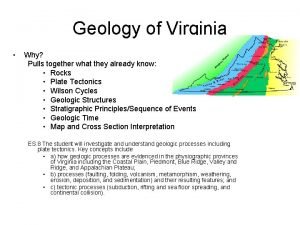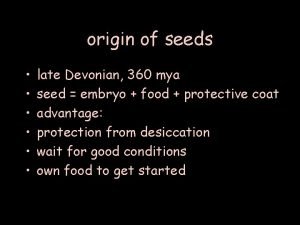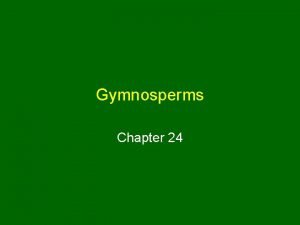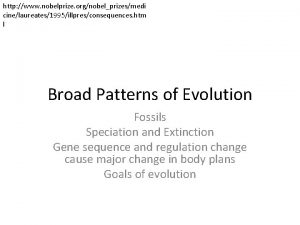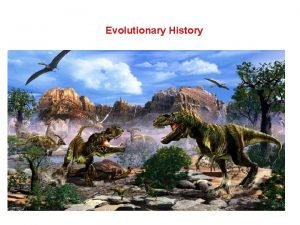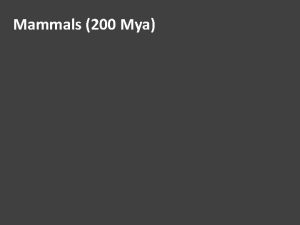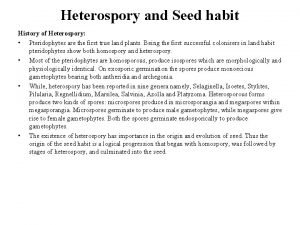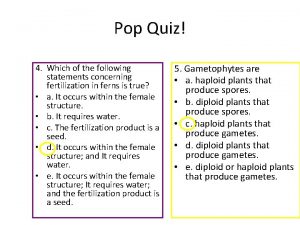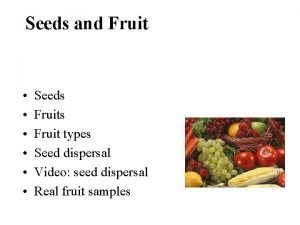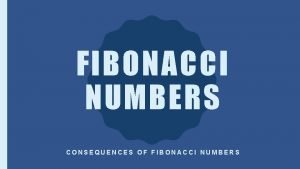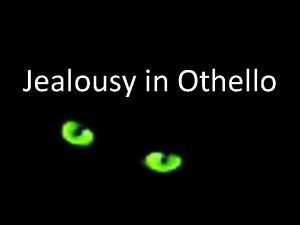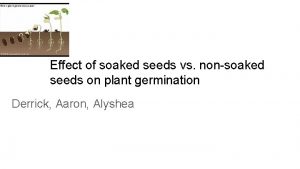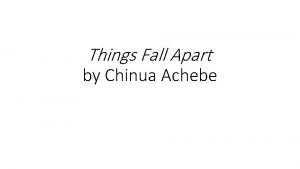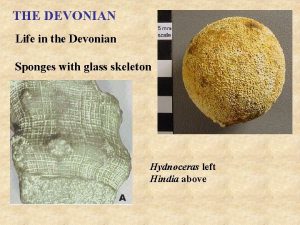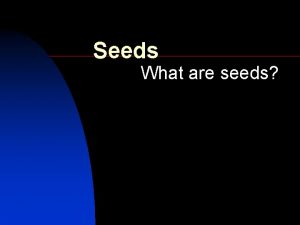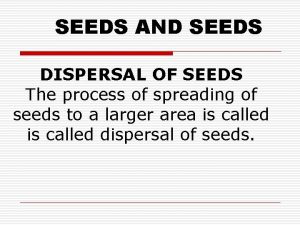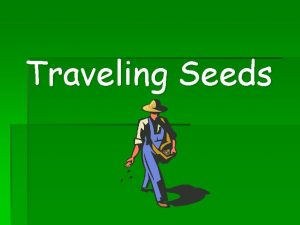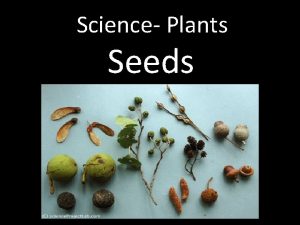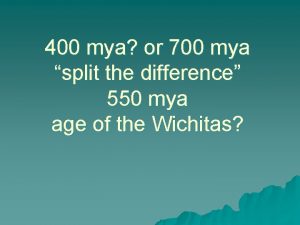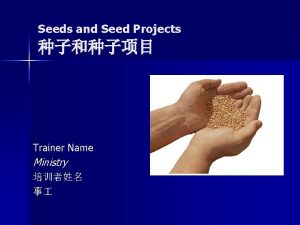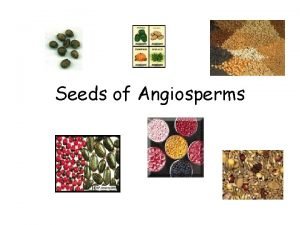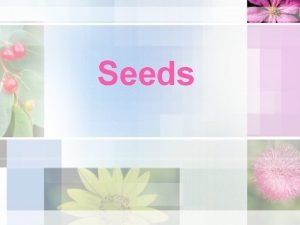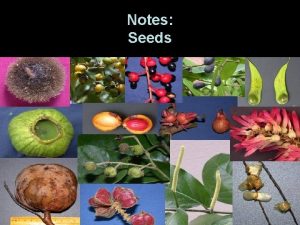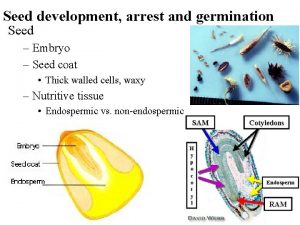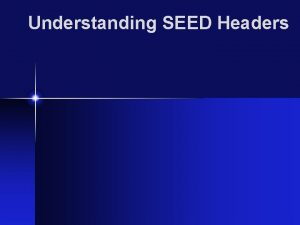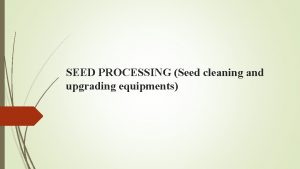origin of seeds late Devonian 360 mya seed





















- Slides: 21

origin of seeds • • • late Devonian, 360 mya seed = embryo + food + protective coat advantage: protection from desiccation wait for good conditions own food to get started

reproductive adaptations of seed plants • gametophytes smaller • female gametophyte retained on parent sporophyte • male gametophyte transports sperm • water not required for fertilization • seeds are means of dispersal

2 types of seed plants • 1. Gymnosperms “naked seeds” – seeds exposed (on cones) • 2. Angiosperms “vessel seeds” – seeds inside fruits

gymnosperm life cycle • • heterospory w/2 types of cones: 1) small cones w/microsporangia microspores develop into pollen = immature male gametophyte reduced in size—no antheridia whole gametophyte travels (pollination) fertilization without water

gymnosperm life cycle • 2) large cones have megasporangia • megasporangium protected by integuments • ovule = megasporangium + integuments • seed = mature ovule • integuments become seed coat • megaspore stays in megasporangium

gymnosperm seed example: Pine • seed coat (2 n) female gametophyte (n) embryo (2 n) embryo is new sporophyte female gametophyte is stored food

pine life cycle • 3 years to make seed • pollination & seed dispersal by wind

gymnosperms--cycads • • prominent w/dinosaurs today 11 genera 130 sp tough leaves look like ferns but have cones w/seeds roots assoc. w/cyanobacteria plants defended by toxic compounds

gymnosperms--Ginkgo • • • only genus in group Ginkgophyta thought extinct good urban tree stinky seeds veins dichotomously branched

gymnosperms--Gnetophyta 3 very different genera, 70 sp • • 1) Ephedra desert “mormon tea” ephedrine

gymnosperms--Gnetophyta • 2) Gnetum • tropical vine • flat leaves

gymnosperms--Gnetophyta • 3) Welwitschia mirabilis • Namib desert, 2 leaves, ~1500 yrs old

gymnosperms--conifers • very successful. 50 genera, 550 sp • most evergreen • needle leaves adapted for drought – small surface area, thick cuticle – stomata sunken in valleys

Taxodium distichum bald cypress Heron Pond, Cache River State Natural Area , S IL deciduous relative of redwoods & sequoias

• oldest plants • Bristlecone Pines 4600 years old

gymnosperms--conifers • most massive plants • Giant Sequoia 26 m circumference, (8. 3 m diameter!) 3000 years old • tallest living plants • Coast Redwoods 367 ft tall, 600 -800 yrs old • Watterson Towers only 281 ft

types of growth • primary growth (up or down): shoot & root apical meristems • secondary growth (out): cambium— meristem makes shoot & root thick

secondary growth • vascular cambium: – xylem to inside, phloem to outside • wood is secondary xylem • cork cambium makes cork to outside • bark = cork + phloem – everything outside of vascular cambium

tree rings: seasonal changes in xylem cell size

dendrochronology • • • tree rings date historical events similar patterns in neighboring trees overlap rings: to get complete record need consistent rings regular wet & dry cycles

Plant tissue culture Fig 38. 14 • plant cells are totipotent: – any cell can grow into whole new plant • • • new plant is clone (same genes) examples: leaf cutting, Wollemi Pine callus = undifferentiated tissue (wound) develops roots and shoots balance of hormones required biotech: insert gene into callus
 Devonian plants
Devonian plants 360 mya
360 mya Seeds are present but naked in
Seeds are present but naked in Dominate
Dominate 175 mya
175 mya 488 mya cambrian
488 mya cambrian Mya hink age
Mya hink age Ubpas
Ubpas Juramaia
Juramaia Mya eve murphy
Mya eve murphy Diagram of heterospory
Diagram of heterospory Parts of plants and their functions
Parts of plants and their functions Temptation scene in othello
Temptation scene in othello Which of the following statements about pop art is true
Which of the following statements about pop art is true Two types of seeds
Two types of seeds Nuts seeds legumes
Nuts seeds legumes Sowing discord among the brethren
Sowing discord among the brethren Fibonacci sequence
Fibonacci sequence Othello, jealousy
Othello, jealousy Conclusion of seeds
Conclusion of seeds V&f seeds
V&f seeds Why does nwakibie trust okonkwo to farm his yam seeds?
Why does nwakibie trust okonkwo to farm his yam seeds?
